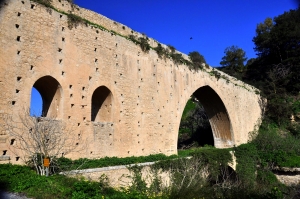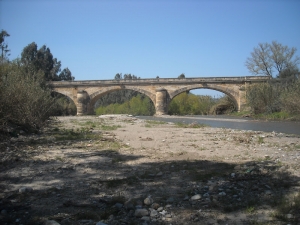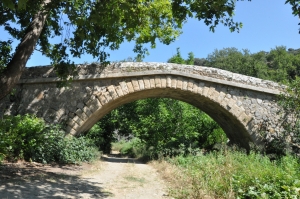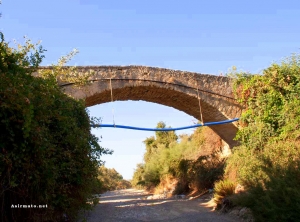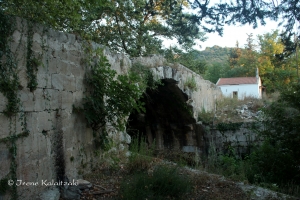The beautiful arched bridge of Prevelis is met on the way to the homonym monastery and crosses Megas River which empties at the famous beach of Preveli. It was built in the 18th century by monks of the monastery.
At the area of Agia Irini, Spilia, there is the largest of the aqueduct bridges built in Crete. The aqueduct was built in 1830-40 by the Egyptians after the discovery of the ancient aqueduct of Knossos that had a tunnel of 1150m. Therefore, tunnel was cleaned and reused.
The fountain of Morozini (known as Lions) is one of the nicest Venetian monuments of Candia (current Heraklion). The fountain was watered by the spring of Karidaki and the watered traveled about 15km in a gigantic aqueduct, one of the longest in the then world.
The Bridge on the River Keritis is made of stone with three arches and was built in 1908. Adjacent to it, on 1 August 1941 the Germans executed 118 men (with disabled among them) under the despicable charge of resistance against the German invasion in Crete.
The stone single arched bridge of Lahanas was built in the 19th century to serve those who wanted to cross the river Richtis. According to witnesses, here took place a tragic story. During the exchange of populations between Greece and Turkey, the Christians killed the Turks who were trying to reach Sitia port so as to leave to Turkey.
The Venetian stone bridge of Platanias, named San Marco, crosses the river Platanias and is a single arched bridge with an arc length of 17.8m, width of 8m and height 3.65m. The bridge is the longest single-arch bridge in Crete.
Elliniki Kamara (i.e. Greek Arch) is an arched bridge built in the Hellenistic Era with some later additions (Venetian and Ottoman Era). The name comes from Hellenistic Kamara. The opening of the arc is 11.10m long, 8.40m high and has a width of 3.00m.
The ancient bridge of Eleftherna was built in the first half of the 4th century and is preserved in excellent condition, crossing the torrent Chalopotas. Nearby there was another twin bridge that has not survived. It has a length of 9.5 meters and a width of 5.25 meters. It has a characteristic shape, as there is no arch, but a triangular opening (ekforic architecture).












